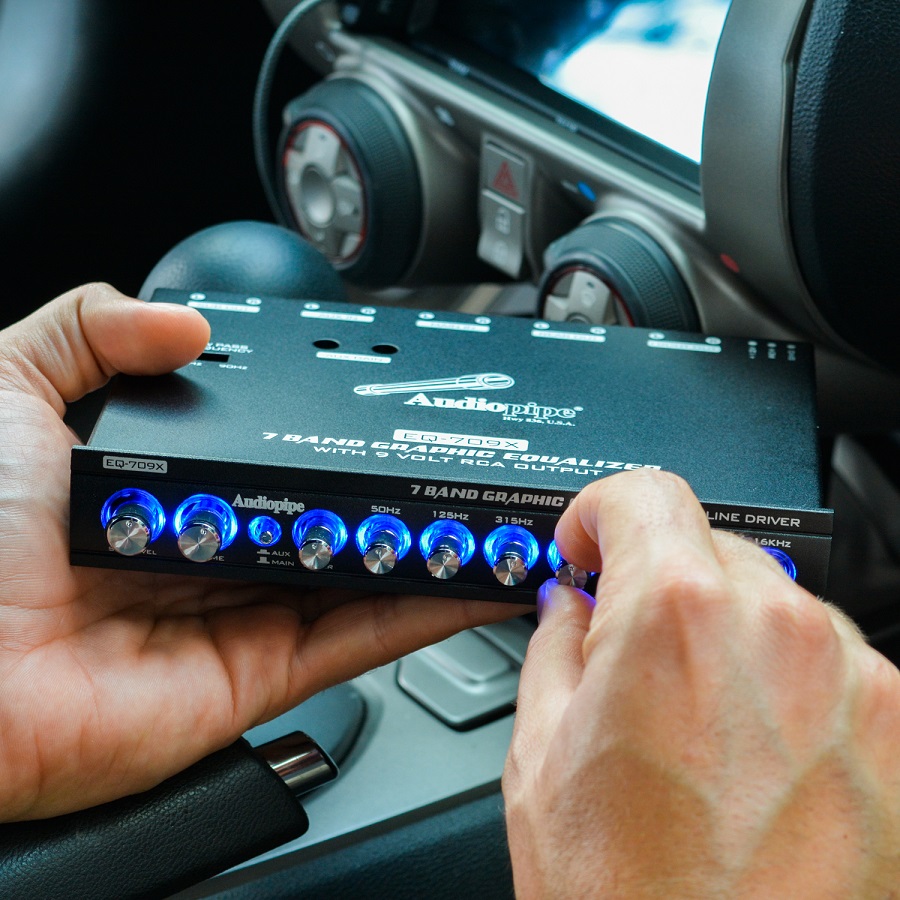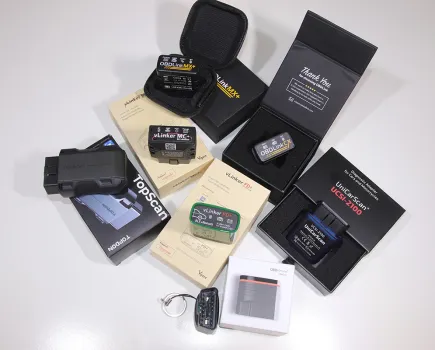Head units, speakers, amps and subs: that’s all there is to car audio, right? Well, not quite. Here are some of the other car audio accessories you might not know about…
You see, there’s a difference between creating a great system and building the loudest on the streets. Or indeed putting together the optimum system for the finest sound quality. And what’s more, you don’t have to be an out-and-out audiophile to realize that there’s a lot more that goes into many a professional system than simply slamming in a whole load of woofers and 10000-watts of amplification. The truth is that a lot of this comes down to choosing the best audio accessories to support the other hardware. And that’s exactly where we’re here to help.
From high-end sound processing and signal distribution to source boosting and, of course, integrating each component to work in harmony with the next, there’s plenty that goes into supreme sonic engineering, but all this doesn’t have to be as complicated as you might think. We’re not here to blind you with science, we like to make this technical stuff easy to understand… chiefly so we can understand it ourselves.
So, whether you’re after a hefty volume upgrade without the distortion; searching for a way to optimize your system’s sound quality, or, simply looking to solve some of the most common audio niggles, this guide should help you out with every car audio accessory you could ever need…
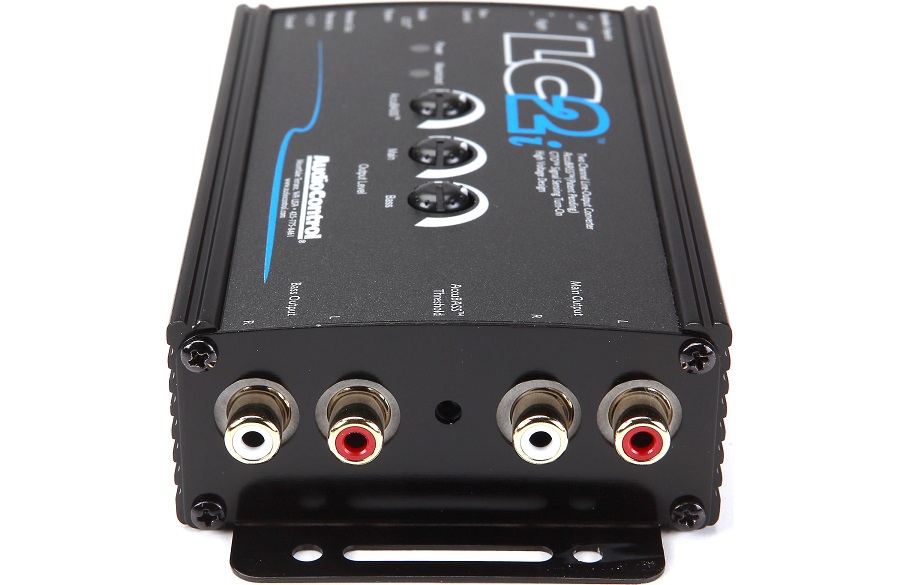
Line Output Convertors
Let’s start with perhaps the simplest problem. Installing an aftermarket amplifier without changing the factory head unit. Here a line output convertor (LOC) is most likely the solution to your woes.
Sometimes known as line level convertors or high-low converters, what these do is take the (high-level) music signal from the head unit speaker outputs and convert it to a (low level) signal that allows transfer to your amplifier using standard RCA leads.
Stock head units don’t often have RCA outputs and not all amplifiers have high-level inputs which usually makes them completely incompatible. A line output converter instantly solves the problem. Basically speaking, once you’ve spliced one of these into the speaker channels on the head unit, you can plug in a set of RCAs and away you go.
LOCs are most commonly available with 2-channel or 4-channel outputs (for 2 or 4 speakers, or maybe a sub or two) and some even include a signal sensing remote, so you don’t have to hook your power amp up to an ignition live to switch it on and off.
But all this is just for the most basic items. Nowadays you can buy many high-end units which cater for vehicle-specific plug and play application, or for standard systems which incorporate factory amplifiers. These can process even more channels (such as separate outputs for factory woofers, mid-range drivers and tweeters) and bunch them together to create a single full-range signal. Others have built-in signal processors and all the trimmings. You can spend from 20-quid to many hundreds on one of these, depending on what you expect it to do.
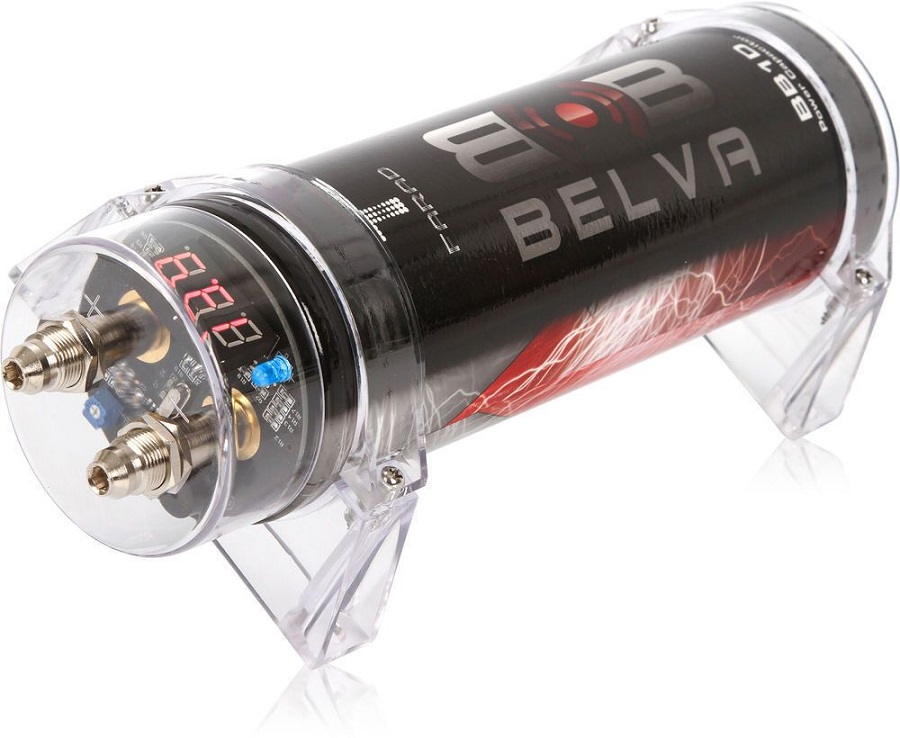
Power Caps
With more and more clever power amplifiers hitting the market over the last decade, capacitors aren’t as common as they once were. But these can still be useful and there’s no doubt that we still see them in all sorts of audio builds, not just full-on competition cars.
The idea is that one of these will store a whole load of electricity, making them a monster sized version of the tiny electrical capacitors you’ll see on the circuit boards inside just about any electronic device. What makes these ideal for powerful car audio systems is that, when the bass drops and the amplifier needs the extra juice to keep the big, stiff subwoofer cones moving, it can suck it straight out of the power cap, rather than directly from the car battery.
A cap doesn’t improve sound quality as such (although it will help in the case of signal degradation due to insufficient power), but feeding a power amplifier huge gobs of power for short bursts, and then allowing the cap to essentially charge itself stable from the battery, prevents the audio from interfering with other vehicle systems that require a consistent level of power. If you’ve ever noticed that your revs drop or your headlights dim every time you spank your woofers, you might need a power cap.
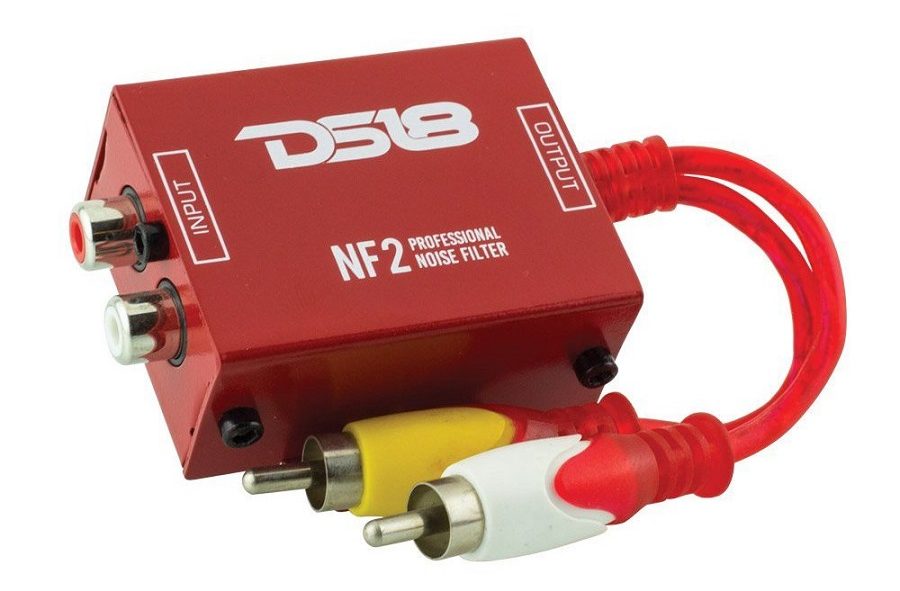
Ground Loop Isolators
A ground loop isolator is essentially a filter which can eliminate any hissing and interference that creeps into your system. Using one of these is essentially a way of cutting out any unwanted signal noise that transfers from the head unit to your power amplifier and onto your speakers.
Ground loops are caused when multiple components in an audio system draw power from the same source but have grounds in different locations (or at least locations with different grounding potential). When you connect these components together the interference can manifest itself as a whining or humming in the music signal. Because car audio amplifiers and head units have to be grounded in different places along the chassis, a ground loop is a common problem in car audio systems, and we have to say one that’s extremely annoying. It can also occur in cases where an amplifier is grounded to the chassis but the head unit to the cigarette lighter. This will almost always cause huge signal noise.
In any case, while a ground loop isolator doesn’t cure the ground loop itself, it will eliminate the symptoms, and send a much cleaner signal to your amplifier. Usually these are a simple plug and play box that connects in-line with your RCA leads.
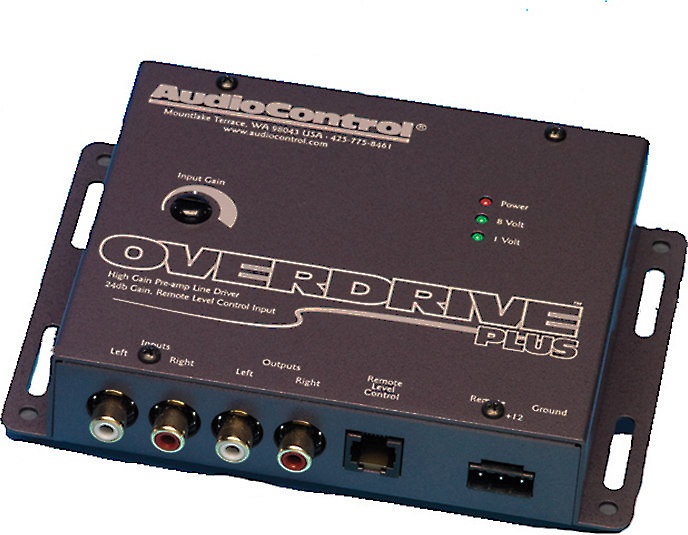
Preamps
Achieving high volumes and the best quality sound is all about getting the strongest signal from the source to the speakers. After all, that’s what any amplifier actually does, it simply ‘amplifies’ the signal so it can move the speaker cones. But what about the signal heading from your head unit to the power amplifier? Well, you can strengthen this by using a ‘pre-amplifier’. Because of the way these specialist audio components boost the signal down the line, some also refer to them as line drivers.
Think of a preamp as a miniature amplifier, what it does it take the relatively weak signal from your head unit and build it up to a signal that’s significantly stronger. This improved signal is far more noise-tolerant, meaning that it’s less likely to pick up any interference on its long journey to the power amp. The result is significant reduction in noise and distortion, and a final signal with better dynamic range. A stronger signal also means that you don’t have to turn the gain on your power amplifier up as high to get the maximum output (a sure-fire way of introducing more noise into the system). Basically, when you’re using a line driver your power amp doesn’t have to struggle to build up a tiny signal to a huge one.
Signal Booster
The low-level signal from your head unit may be as little as 1volt, but a line driver can ramp up the power to up to 9volts or so, giving the power amp a much better chance of scaling it up without being overworked. Even aftermarket head units with flashy 2.5 volt pre-outs will benefit from this kind of signal boosting.
In some high-end systems, people use a preamp to make the signal strong enough for further processing and adjustment before the amplifier. This comes into play when optimal sound quality is a priority and it offers a way of tuning the system, or more specifically each part of the frequency range, for the very best performance.
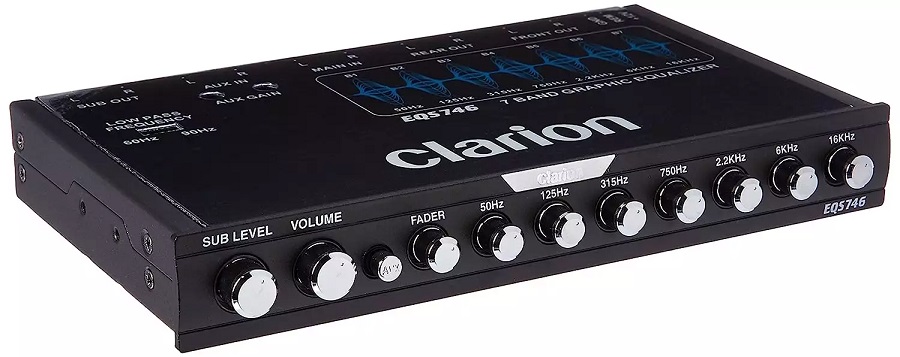
Equalizers
These are designed to correct any problems with the frequency response from the source. Many factory systems will play certain frequencies louder than others, which isn’t ideal when it gets to the amplifier. This can also happen in some aftermarket head units when they seem to play a bit flat.
An EQ is essentially an adjustable processing unit capable of tweaking the volume of different parts of the signal allowing you to fine tune individual frequency ranges to your own requirements.
Many have high-level inputs as well as low level RCA connections making them ideal for both types of head unit. These are usually installed directly after the source, before any preamps or power amplifiers.
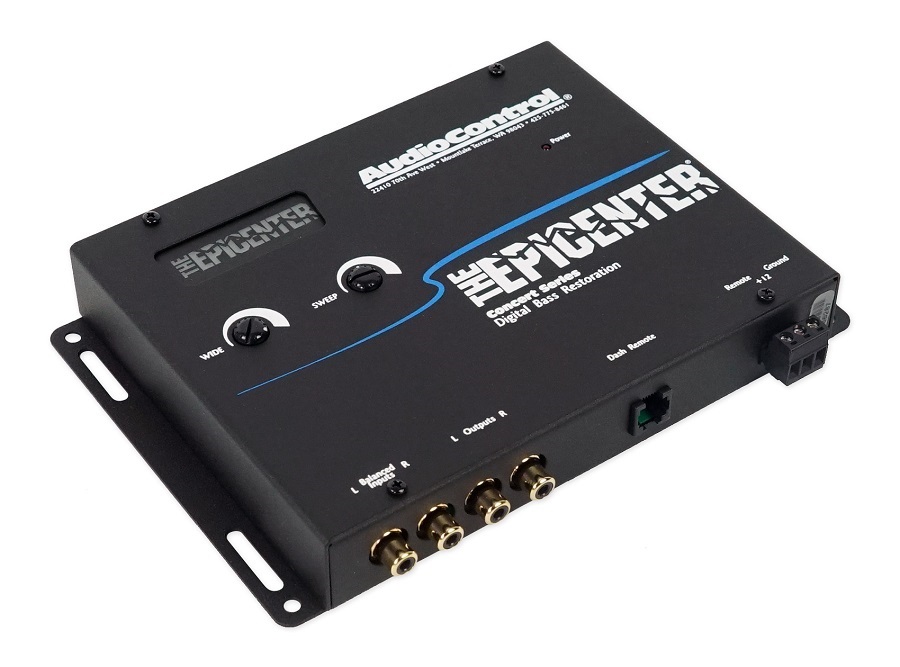
Bass Processors
These are by no means a common piece of kit, but there’s no doubt that they can make a massive difference to what you can hear, and feel, when you crank up the volume.
Usually you’ll find a bass processor (or a bass restoration processor) in high-end competition systems designed to reproduce the lowest, hard-hitting sub bass frequencies.
These solve a problem which occurs in the recording of music. Sound engineers want you to play their tracks at high volumes, but in low quality car systems turning up the lowest bass frequencies with the other frequencies will cause distortion. To avoid this happening, they roll back the bass level cutting off these super-low frequencies.
The problem here is at the source; the actual music file playing on your system. What a bass processer does is automatically detect bass harmonics to work out what’s missing and then digitally reconstruct these frequencies. These are added into the signal and sent on to the power amplifier to be reproduced by the subwoofer. The result of course is a kind of upscaling beyond what’s actually recorded on your music and even lower punchier bass. In other words, you’re not just getting the full picture of what’s recorded on your music, you’re getting a whole lot more.
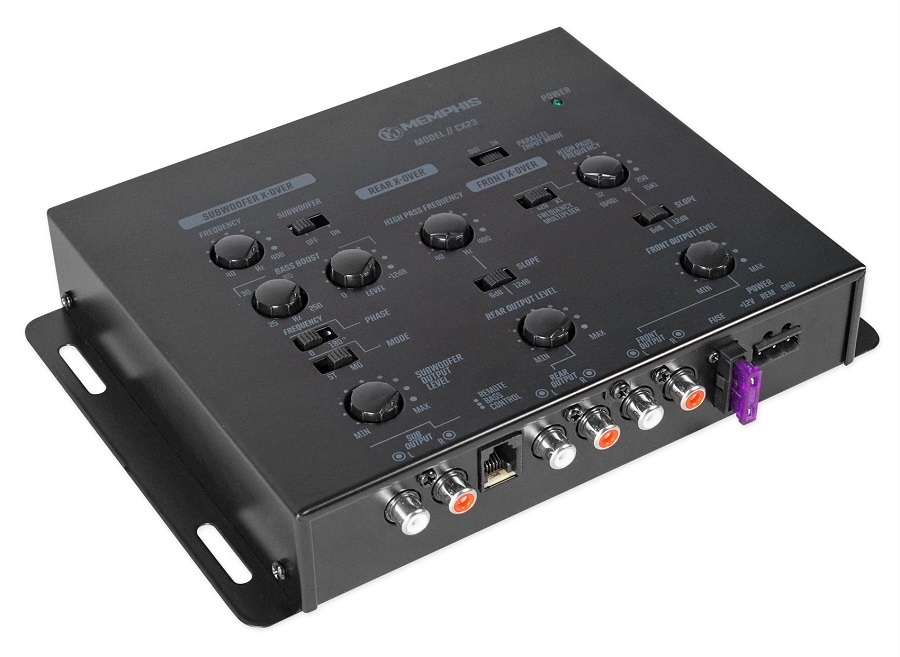
Crossovers
Again, a crossover is a type of signal processor and, although many come built into power amplifiers nowadays, specialist fully-adjustable stand-alone crossovers are often used in high-end systems. These can be extremely useful in the quest for increased volume and the best possible sound quality.
In a similar way to the crossover unit you’ll find with many component speaker kits (check out our guide to fitting car speakers for more on those), you can think of an external crossover as a distribution center designed to send the relevant part of the signal to the relevant amplifier, powering the relevant speaker.
Getting the correct frequency range to the correct speaker is an important part of creating the best possible sound. Subwoofers are only capable of reproducing low frequency sub bass for example, so there’s no point in sending the high frequencies down the line to those. In fact, sending the wrong frequencies can damage the speakers themselves. It’s the same story for high frequency tweeters, they don’t need the mid-range or sub bass frequencies. All a crossover does is take the full range signal, split it up as required and make sure the correct frequencies are directed to the correct speakers. This allows them to focus on the bandwidth of frequencies they’re actually designed to play.
Typically a crossover will contain a highpass and lowpass filter. Highpass simply allows the high frequencies to ‘pass’ while filtering our the rest. Lowpass is the other way around. Pretty simple when you know, eh?
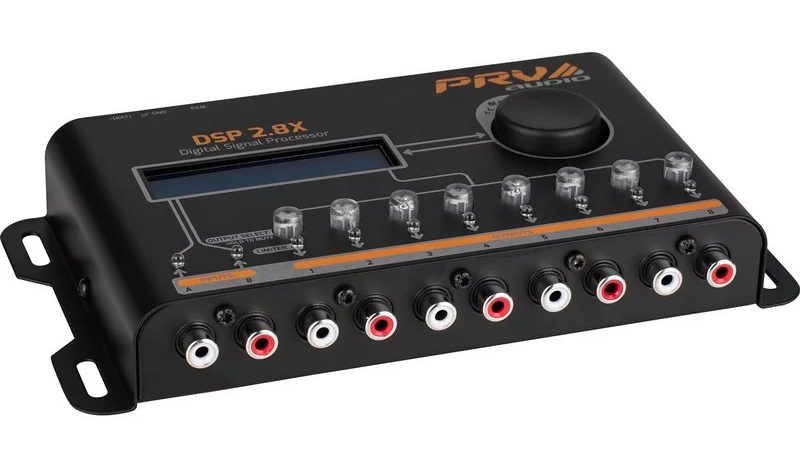
Digital Signal Processor (DSP)
DSPs are seen as the daddy of all processing units and, for the most part, they can act as an all-in-one unit that can do the job of a pre-amp, equalizer, bass processor and a crossover. In other words, what these are is extremely clever, and usually reserved for professional level systems.
If that’s not enough, many of these are also computer controlled. Rather than fiddling a load of knobs and dials you can tweak the settings with a laptop or tablet, giving far more accuracy, flexibility on frequency ranges and essentially sound tunability.
Stronger Source
Of course, it’s not just these advanced features that make a DSP one of the most coveted components for high end audio builds. Many also come with other features such as digital time alignment, multiple amplifier control and USB/SD inputs for hard drives and cards containing massive, full quality music files. (Rather than the super-compressed mp3 files your system has to try and scale up.) Again, the stronger the signal (with the most digital information) you start off with, the better sound quality can be achieved by the time it gets to the speaker. Some DSPs even have bluetooth connectivity that’s capable of taking full-range music signals from handheld devices and sending them on to your amplifiers without them ever going through the head unit.
One of the more interesting features here is the ability to control bass roll off, which is a little different to digital bass restoration you get with a bass processor. Basically, it’s extremely likely that any factory head unit will turn the bass levels down when you turn the volume up. This measure is designed to protect low quality standard speakers. A DSP will stop this adjustment from happening, essentially restoring the bass volume levels form the source. This is ideal when using higher quality aftermarket speakers because, to put it bluntly, you want all that bass, not just some of it. Yep, we told you DSPs were clever!

